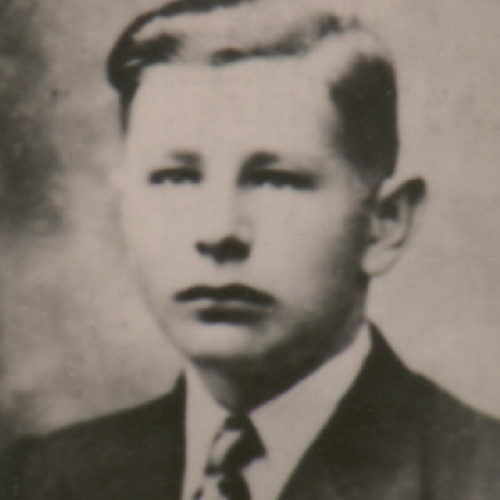Stefan Trzciński - Instytut Pileckiego

Stefan Trzciński was murdered for helping Jews during a show execution organized by the Germans in the Złotopolice forest on November 21, 1943.
In the autumn of 1939, Northern Mazovia was incorporated directly into the Third Reich as Regierungsbezirk Zichenau, which formed part of Gau East Prussia. The Regierungsbezirk covered several counties, including the Płońsk county. In September 1940, a ghetto was established in Płońsk, and the Germans resettled 12,000 Jews there. Following the liquidation of the ghetto in December 1942, almost all residents were deported to the death camp of Auschwitz-Birkenau. Those who managed to avoid execution or deportation began a dramatic struggle for survival. Among Poles who went to the aid of Jewish escapees were Stefan Trzciński with his brother Jan and mother Stanisława Trzcińska, from Skwary in the Naruszewo commune.
The Trzcińskis offered assistance to the Klin family, whom they had known before the war. They provided them with food and temporary shelter in the barn. On 23 August 1943, Trzcińskis homestead was surrounded by a German gendarmerie unit. One of the Germans had a piece of paper with the surnames of people who were helping Jews. The Germans commenced brutal interrogations. Stanisława was hit in the face several times, while Stefan was kicked and beaten unconscious by the gendarmes. Jan managed to escape and survive the war. Stanisława and Stefan were taken to a penal and investigative prison in Pomiechówek.
Towards the end of October 1943, the Germans held a briefing for village administrators from the communes where the arrested men had lived. They ordered that representatives of the villages in question must come to the edge of the forest between Złotopolice and Kamienica-Wygoda on 21 November for an execution of Poles who had been hiding Jews. On that day, the Gestapo men and gendarmes brought seven convicts from Pomiechówek, i.e. Stefan Trzciński, Ignacy Ambroziak, Władysław Muchowski, Symcha Frost, a Jew unknown by name and two other Poles (their surnames remain unknown, but they could have been Stefan Dubracki and Jan Wójcik). The Jews were hanged for alleged robberies and arms possession, while the Poles for hiding Jews and providing them with assistance. After a while the Germans ordered the village administrators to remove the bodies of the murdered and take them to the cemetery in Smoszewo. After the war, an exhumation of the murdered men was organized. Ignacy Ambroziak and Władysław Muchowski were buried in Radzymin. Stefan Trzciński was interred at the cemetery in Naruszewo.
In 1991, the Yad Vashem Institute awarded the Righteous Among the Nations titles to Ignacy Ambroziak and his wife Rozalia, to Stanisława Trzcińska and her sons, Stefan and Jan, as well as to Władysław Muchowski.
Testimony of witness Jan Trzciński, 23 May 1985
I wanted to find out what happened to my brother and mother, and I learned that first they were taken to the gendarmerie post in Naruszewo, and from there to the penal and investigative prison in Pomiechówek. Towards the end of October 1943, the Gestapo men held a briefing for all village administrators from the Naruszewo commune and ordered them to gather people from their villages at the edge of the forest in Złotopolice on 21 November 1943 to witness what the Germans do to those who are hiding Jews. I didn’t go there, because I was in hiding, but I learned why the Germans actually wanted the village administrators to be there at that time. It turned out that the gendarmes from Naruszewo and the Gestapo men from Płońsk, Nowy Dwór and Płock hanged 7 men in Złotopolice; among them was my brother Stefan Trzciński, farmers Ambroziak and Muchowski from Cholewy, two Poles from Warsaw or its vicinity and two Jews. The bodies of the hanged men were buried in a pit at the execution site.
Stefan Trzciński was commemorated by the Pilecki Institute on May 10, 2023 in Złotopolice, click here to read about it.
Joanna Trzcińska, great-granddaughter of Stanisława Trzcińska, relative of Stefan Trzciński, tells the story of her family.